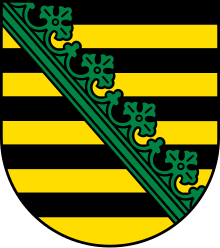In heraldry, gules is the tincture with the colour red. It is one of the class of five dark tinctures called "colours", the others being azure (blue), sable (black), vert (green) and purpure (purple).

In heraldry, variations of the field are any of a number of ways that a field may be covered with a pattern, rather than a flat tincture or a simple division of the field.
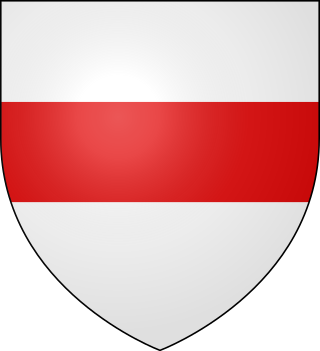
In heraldry, a fess or fesse is a charge on a coat of arms that takes the form of a band running horizontally across the centre of the shield. Writers disagree in how much of the shield's surface is to be covered by a fess or other ordinary, ranging from one-fifth to one-third. The Oxford Guide to Heraldry states that earlier writers including Leigh, Holme, and Guillim favour one-third, while later writers such as Edmondson favour one-fifth "on the grounds that a bend, pale, or chevron occupying one-third of the field makes the coat look clumsy and disagreeable." A fess is likely to be shown narrower if it is uncharged, that is, if it does not have other charges placed on it, and/or if it is to be shown with charges above and below it; and shown wider if charged. The fess or bar, termed fasce in French heraldry, should not be confused with fasces.
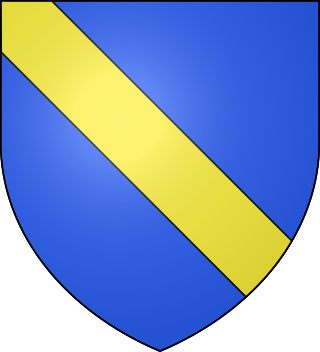
In heraldry, a bend is a band or strap running from the upper dexter corner of the shield to the lower sinister. Authorities differ as to how much of the field it should cover, ranging from one-fifth up to one-third. The supposed rule that a bend should occupy a maximum of one-third of the field appears to exclude the possibility of three bends being shown together, but contrary examples exist.

In heraldry, a charge is any emblem or device occupying the field of an escutcheon (shield). That may be a geometric design or a symbolic representation of a person, animal, plant, object, building, or other device. In French blazon, the ordinaries are called pièces, and other charges are called meubles.

In heraldry, a torse or wreath is a twisted roll of fabric laid about the top of the helmet and the base of the crest. It has the dual purpose of masking the join between helm and crest, and of holding the mantling in place.
In classical heraldry, vert is the tincture equivalent to the colour "green". It is one of the five dark tinctures (colours). The word vert is simply the French word for "green". It is used in English in the sense of a heraldic tincture since the early 16th century. In Modern French, vert is not used as a heraldic term. Instead, the French heraldic term for green tincture is sinople. This has been the case since c. the 16th century. In medieval French heraldry, vert also meant "green" while sinople was a shade of red. Vert is portrayed by the conventions of heraldic "hatching" by lines at a 45-degree angle from upper left to lower right, or indicated by the abbreviation vt. when a coat of arms is tricked.

Ermine in heraldry is a "fur", a type of tincture, consisting of a white background with a pattern of black shapes representing the winter coat of the stoat. The linings of medieval coronation cloaks and some other garments, usually reserved for use by high-ranking peers and royalty, were made by sewing many ermine furs together to produce a luxurious white fur with patterns of hanging black-tipped tails. Due largely to the association of the ermine fur with the linings of coronation cloaks, crowns and peerage caps, the heraldic tincture of ermine was usually reserved to similar applications in heraldry. In heraldry it has become especially associated with the Duchy of Brittany and breton heraldry.

The rose is a common device in heraldry. It is often used both as a charge on a coat of arms and by itself as an heraldic badge. The heraldic rose has a stylized form consisting of five symmetrical lobes, five barbs, and a circular seed. The rose is one of the most common plant symbols in heraldry, together with the lily, which also has a stylistic representation in the fleur-de-lis.
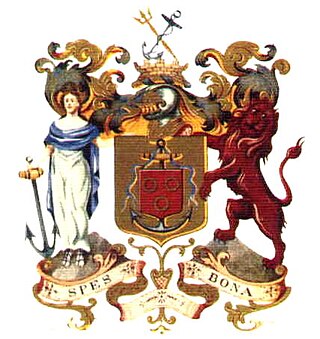
The coat of arms of Cape Town is the traditional symbol of the municipality of Cape Town. The original arms from the 20th century are no longer in official use, though no new arms have yet been adopted.

In heraldry and heraldic vexillology, a blazon is a formal description of a coat of arms, flag or similar emblem, from which the reader can reconstruct the appropriate image. The verb to blazon means to create such a description. The visual depiction of a coat of arms or flag has traditionally had considerable latitude in design, but a verbal blazon specifies the essentially distinctive elements. A coat of arms or flag is therefore primarily defined not by a picture but rather by the wording of its blazon. Blazon is also the specialized language in which a blazon is written, and, as a verb, the act of writing such a description. Blazonry is the art, craft or practice of creating a blazon. The language employed in blazonry has its own vocabulary, grammar and syntax, which becomes essential for comprehension when blazoning a complex coat of arms.

The coat of arms of the present-day German free state of Saxony shows a tenfold horizontally-partitioned field of black (sable) and gold/yellow (or) stripes, charged with a green (vert) crancelin running from the viewer's top-left to bottom-right. Although the crancelin is sometimes shown bent (embowed) like a crown, this is due to artistic license. The coat of arms is also displayed on the state flag of Saxony.

The coat of arms of the German state of Saxony-Anhalt represents its historical origins. The land area was formed out of the former Prussian Province of Saxony and the German Free State of Anhalt. The upper part of the coat of arms represents the Province of Saxony with its green crancelin while the lower half shows the bear of the Free State of Anhalt.
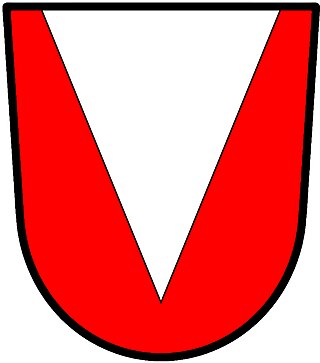
In heraldry, a pile is a charge usually counted as one of the ordinaries. It consists of a wedge emerging from the upper edge of the shield and converging to a point near the base. If it touches the base, it is blazoned throughout.

German heraldry is the tradition and style of heraldic achievements in Germany and the Holy Roman Empire, including national and civic arms, noble and burgher arms, ecclesiastical heraldry, heraldic displays and heraldic descriptions. German heraldic style is one of the four major broad traditions within European heraldry and stands in contrast to Gallo-British, Latin and Eastern heraldry, and strongly influenced the styles and customs of heraldry in the Nordic countries, which developed comparatively late. Together, German and Nordic heraldry are often referred to as German-Nordic heraldry.

Bernard II of Saxe-Lauenburg was a member of the House of Ascania and Duke of Saxe-Lauenburg from 1426 to 1463. His full title was Duke of Saxony, Angria and Westphalia, however only ruling the branch duchy of Saxe-Lauenburg between 1426 and 1463.

Dexter and sinister are terms used in heraldry to refer to specific locations in an escutcheon bearing a coat of arms, and to the other elements of an achievement. Dexter indicates the right-hand side of the shield, as regarded by the bearer, i.e. the bearer's proper right, and to the left as seen by the viewer. Sinister indicates the left-hand side as regarded by the bearer – the bearer's proper left, and to the right as seen by the viewer. In vexillology, the equivalent terms are hoist and fly.

Erasure in blazon, the language of heraldry, is the tearing off of part of a charge, leaving a jagged edge of it remaining. In blazons the term is most often found in its adjectival form, erased, and is usually applied to animate charges, most often heads or other body parts.

A number of cross symbols were developed for the purpose of the emerging system of heraldry, which appeared in Western Europe in about 1200. This tradition is partly in the use of the Christian cross an emblem from the 11th century, and increasingly during the age of the Crusades. Many cross variants were developed in the classical tradition of heraldry during the late medieval and early modern periods. Heraldic crosses are inherited in modern iconographic traditions and are used in numerous national flags.
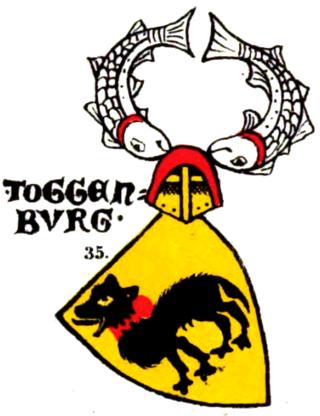
The hound or dog is used as a charge in classical heraldry. In English heraldry, the commonly used variant are the talbot, also blazoned as sleuth-hound, e.g. in the arms of Wolseley of Staffordshire, the greyhound and bloodhound. Rarely seen variants are the ratch-hound, the mastiff, the foxhound, the spaniel and the terrier. The "sea-dog" is a curious charge resembling the talbot but with scales, webbed feet and a broad tail, used in the arms of Stourton barony, presumably originally depicting a beaver . Similar charges include the wolf and the fox.
